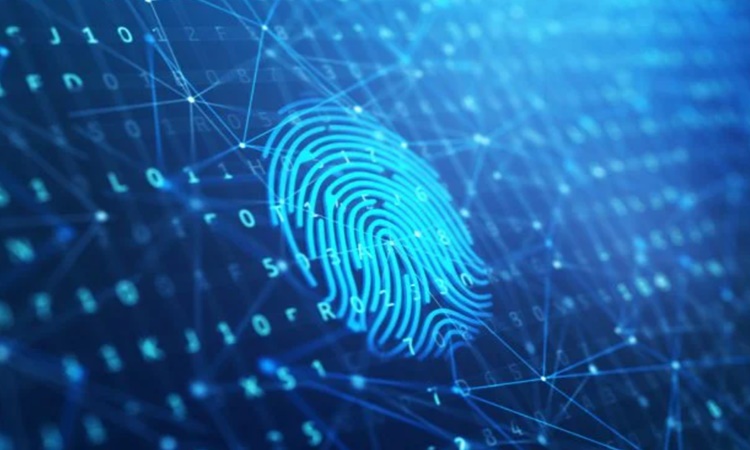Here’s 5 Interesting Fingerprint Facts
FINGERPRINT FACTS – Check out these five (5) interesting fingerprint facts you probably didn’t know.
You may be familiar with the idea that your fingerprints are unique, with no one else globally having the exact same ridge pattern on their fingertips as you do. This uniqueness has made fingerprints a longstanding method for identifying individuals, dating back possibly to 300 BCE in Chinese societies.
Despite their well-established individuality, fingerprints remain an enigma for scientists and are subject to ongoing research. Nevertheless, there are some known facts about them that we can explore.

Your Fingerprints Contain Whorls, Arches, and Loops
Formally known as dermatoglyphs, the patterns of ridges present on the skin of your fingertips derive their name from the Greek words “derma” (meaning skin) and “glyph” (meaning carving). The impressions created by these dermatoglyphs are commonly referred to as fingerprints, encapsulating both the ridges and their corresponding impressions.
These ridges exhibit three fundamental and universally recognized patterns: loops, whorls, and arches. Loops are characterized by curved ridges that form an elongated C shape, with the open ends of the C pointing in the direction of or away from the thumb. Whorls manifest as ridges arranged in concentric circles or spirals. Arches resemble the contour of a mountain. Among these patterns, loops are the most prevalent, constituting 60% of fingerprints, followed by whorls at 35%, and arches at 5%.
It’s Almost Impossible to Change or Eliminate Fingerprints
The patterns of fingerprints remain constant throughout a person’s life and do not naturally fade away. Efforts to intentionally erase fingerprints are notably challenging, as demonstrated by the unsuccessful attempts of infamous criminals. For instance, the gangster John Dillinger tried to eliminate his fingerprints by using acid, but the endeavor proved futile. Similarly, other murderers from the Depression era attempted to erase their prints through knife cuts, only to discover the nearly insurmountable difficulty of intentionally eliminating fingerprints—the ridges inevitably regenerate into the original patterns.
Nevertheless, there are specific situations in which individuals may not possess fingerprints. Those with a genetic condition known as adermatoglyphia are born without ridges on their fingertips, palms, or the soles of their feet. Certain skin conditions like psoriasis and repetitive manual labor can alter or wear down the ridges. Additionally, the use of certain chemotherapy drugs may lead to swelling and blistering in the hands, resulting in the loss of fingerprints.
Fingerprints Form Before You’re Born
Research indicates that the formation of ridges on the fingers, hands, toes, and feet occurs under the influence of genetic and environmental factors during fetal growth, typically between the third and sixth months. Genes responsible for the development of dermal layers in these body parts appear to determine the size, shape, and pattern of the ridges. The chemical balance within the mother’s uterus is likely to contribute to this process. The culmination of these influences results in the creation of unique dermatoglyphs, with even identical twins exhibiting distinct fingerprints. It is worth noting that, despite centuries of scientific study on fingerprints, there remains a lack of consensus among scientists regarding the precise mechanism of their formation.

The Function of Fingerprints Is Still a Mystery
The origin and purpose of fingerprints remain a topic of disagreement among scientists. Various theories exist, with one longstanding belief suggesting that fingerprints evolved to enhance grip. In 2009, two researchers from the University of Manchester conducted an experiment by sliding hard plastic sheets over their fingertips, aiming to measure friction. Surprisingly, their findings contradicted the conventional idea, as the ridges on their fingertips were found to decrease the contact area with the plastic, thereby reducing grip strength.
Recent studies have proposed an alternative perspective, suggesting that fingerprints play a role in improving our sense of touch. In a 2021 study at Umeå University in Sweden, researchers examined nerve responses in 12 participants while textured cards were applied to their fingertips. The results indicated specific sensitivity hotspots that corresponded to the ridge patterns of the participants’ fingerprints, supporting the notion that fingerprints contribute to enhancing our tactile perception.
Animals Have Unique Fingerprints, Too
Scientists believed that fingerprints played a role in enhancing our gripping ability, as evidenced by the presence of dermatoglyphs on the fingers and toes of primates such as gorillas, orangutans, and chimpanzees. These dermatoglyphs are distinct for each individual. Surprisingly, koalas, despite being unrelated to humans, also possess fingerprints that closely resemble human ones. Biologists attribute this similarity to convergent evolution, where unrelated species independently evolve similar traits.
READ ALSO: Top 19 Anti-tracking Software For Year 2023
